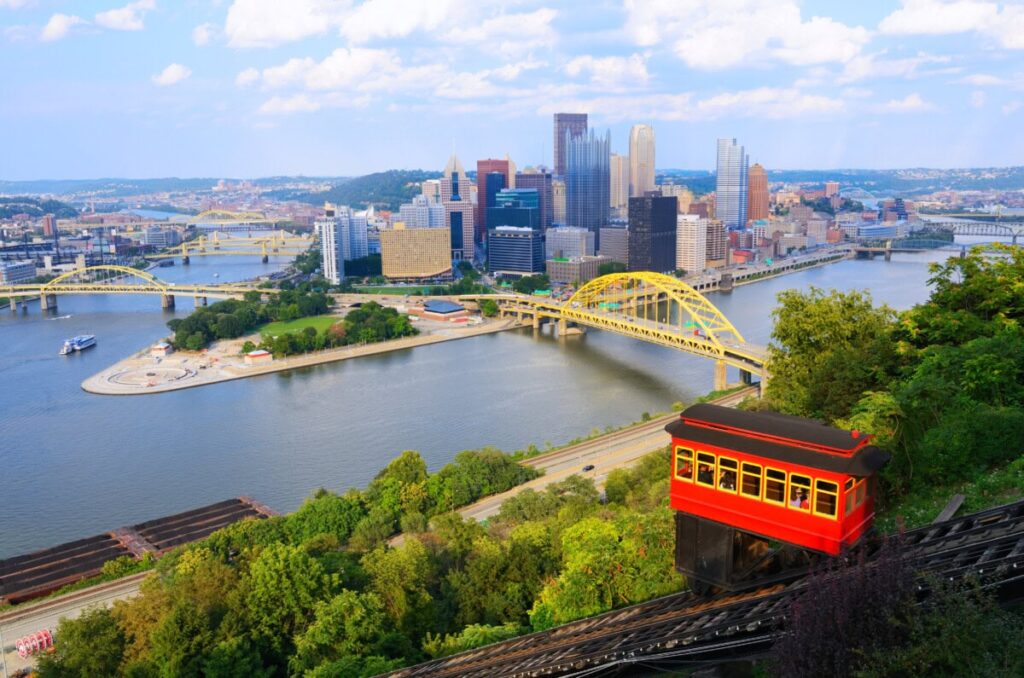Comparing Pittsburgh and Cleveland: Which City Is Right for You?
Are you considering a move to a house in Pittsburgh or an apartment in Cleveland? These two cities, with rich industrial histories and vibrant cultural scenes, offer unique opportunities and challenges. Pittsburgh boasts scenic rivers and a growing tech industry, while Cleveland provides a more affordable cost of living and a strong sports culture. Choosing between Pittsburgh’s bridges and Cleveland’s lakefront living can be a tough decision.
In this comparison of real estate prices, job opportunities, cost of living, and more, we aim to help you make an informed choice for your next home purchase.
Housing Market Comparison
Pittsburgh and Cleveland share similarities in their industrial roots and affordable housing markets, but there are key differences to consider. Pittsburgh offers a diverse housing market with historic homes, row houses, and modern condos in neighborhoods like Lawrenceville and Mount Lebanon. While certain areas have become more desirable due to revitalization efforts, Pittsburgh remains one of the more affordable cities to live in. On the other hand, Cleveland’s real estate market is known for spacious homes and a variety of architectural styles, with a lower cost of living compared to larger metropolitan areas.
Cost of Living Analysis
The cost of living in Pittsburgh is approximately 8% higher than in Cleveland, with differences in utilities, transportation, and housing contributing to this gap. Utilities in Pittsburgh are 23% more expensive than in Cleveland due to factors like hilly terrain and older housing stock driving up heating and electricity costs. Groceries in Pittsburgh are slightly cheaper than in Cleveland, while transportation costs are 9% higher in Pittsburgh. Healthcare costs are slightly lower in Pittsburgh compared to Cleveland, with both cities offering quality healthcare options. Lifestyle expenses are comparable between the two cities, with Pittsburgh’s arts and tech scenes growing while Cleveland provides affordable entertainment options.
Size and Population Overview
Pittsburgh covers about 58 square miles and is home to around 303,000 residents, creating a compact, hilly cityscape. Cleveland, larger in both land area and population, spans about 82 square miles and has approximately 376,000 residents. Both cities offer rich cultural and industrial histories, with Cleveland’s larger area providing a more expansive urban feel compared to Pittsburgh.
Weather and Climate Variations
Both Pittsburgh and Cleveland experience all four seasons, but their proximity to bodies of water results in different weather patterns. Pittsburgh has colder winters with moderate snowfall, while Cleveland faces harsher winters with heavy lake-effect snow due to its location on Lake Erie. Summers in both cities are warm and humid, with Cleveland’s lakeside position moderating temperatures slightly. Severe weather, like thunderstorms in warmer months and occasional snowstorms in winter, affects both cities, with Cleveland experiencing more intense winter conditions due to its proximity to the lake.
Job Market Insights
Pittsburgh’s job market has shifted from its industrial past to focus on healthcare, education, and tech industries. With an employment rate of around 61% and a median household income of $66,000, Pittsburgh offers various job opportunities in healthcare and tech sectors. On the other hand, Cleveland’s job market is driven by healthcare and manufacturing, with an employment rate of about 54% and a median household income of $39,000. Both cities offer stable employment opportunities across various industries, with Pittsburgh focusing on tech innovation and healthcare excellence while Cleveland thrives in manufacturing and healthcare services.
Transportation Comparison
Pittsburgh has a robust public transit system with buses and light rail operated by the Port Authority of Allegheny County, complemented by a walkable downtown area. While biking and walking are challenging in some neighborhoods due to hilly terrain, driving remains common with limited parking. Cleveland’s public transportation system, run by the Greater Cleveland Regional Transit Authority, offers buses and a rapid transit rail system providing access to downtown and suburbs. Cleveland is more car-friendly with wider streets and ample parking, and biking is popular along the scenic waterfront.
Travel Accessibility
Both cities are well-connected for travel with access to major highways, airports, and train routes. Pittsburgh is served by Pittsburgh International Airport, Amtrak’s Capitol Limited and Pennsylvanian routes, and Greyhound and Megabus services. Cleveland has Cleveland Hopkins International Airport, Amtrak routes, and similar bus services.
Lifestyle and Attractions
Pittsburgh offers a dynamic mix of urban and outdoor spaces, starting the day with riverside walks and diverse dining options. The city boasts rich cultural heritage seen in museums, theaters, and sports venues, along with numerous parks and recreational activities. Cleveland combines city life with nature, with residents enjoying lake shore walks and visits to cultural landmarks like the Rock and Roll Hall of Fame. The city’s food scene and cultural events highlight its growing reputation as a cultural hub.
Food and Culture Scene
Pittsburgh’s evolving food scene includes classic comfort food and innovative cuisine in trendy neighborhoods. Cultural events like the Pittsburgh Pierogi Festival and Three Rivers Arts Festival celebrate the city’s heritage. Cleveland’s culinary renaissance brings new life to its dining options, with the West Side Market a popular destination for foodies. The city’s cultural attractions like the Rock and Roll Hall of Fame and Cleveland International Film Festival showcase its growing reputation as a cultural hotspot.
Sports Culture
Pittsburgh’s sports culture revolves around the Steelers, Penguins, and Pirates, with a dedicated fan base supporting the city’s athletic tradition. Cleveland’s passionate sports fans back the Cavaliers, Browns, and Guardians, with championships and iconic venues like Progressive Field and FirstEnergy Stadium adding to the city’s sports pride.
In summary, both Pittsburgh and Cleveland offer unique opportunities for residents and visitors, with rich histories, vibrant cultural scenes, and diverse job markets. Consider your preferences for housing, cost of living, weather, job opportunities, transportation, lifestyle, and sports culture when choosing between these two cities. Ultimately, the decision rests on what aligns best with your lifestyle and priorities. Explore each city’s attractions, connect with locals, and immerse yourself in the community to make an informed choice for your next home.



